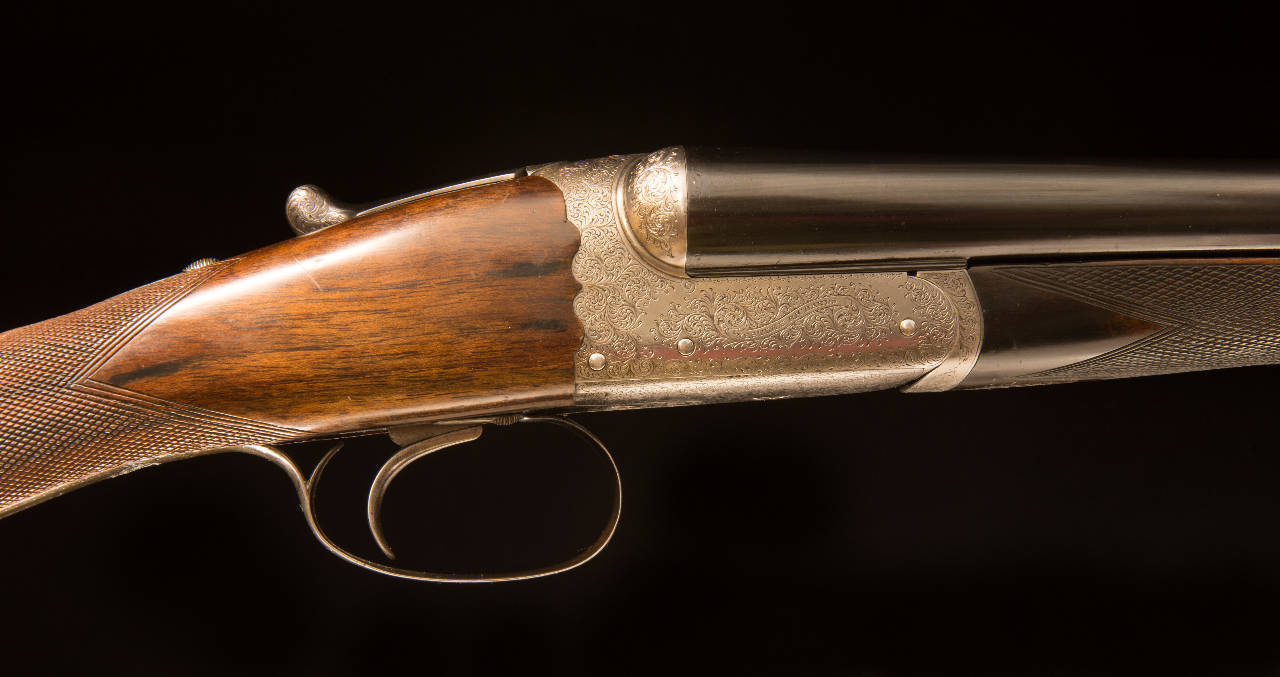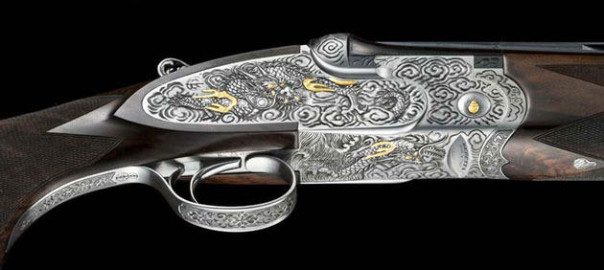Provenance and provenience are synonymous words that are often used interchangeably, but among gun collectors they have nuanced meanings. Webster’s Ninth International Collegiate Dictionary has “origin, source” for both. But for a collector, provenance refers to whose collection the gun was most recently or most famously in, while provenience refers to where the gun was made. For example, Sharps rifle collectors distinguish between those made in Hartford and Bridgeport, Connecticut.
As one of many fans of Westley Richards, I am aware that while a particular gun may have been sold to a famous person from their London shop, all of them were made in Birmingham. A query to Ricky Bond at Westley Richards resulted in the good news that serial number 15639 was the No.1 gun of a bespoken pair finished for the Second Baron John Savile on November 22, 1897. It was a “sleeper” with a very interesting provenance.
Baron Savile (1853-1931) inherited the 18,700-acre Rufford Abbey in 1896, hosting King Edward VII at driven shoots there in 1904, 1905, and 1907; other guests at his shooting parties were the Maharajah of Kuch Behar and Count Trauttmansdorff. Larger estates sometimes reported bigger one-day bags, but Rufford Abbey produced some 1,100 birds to hand on one occasion.
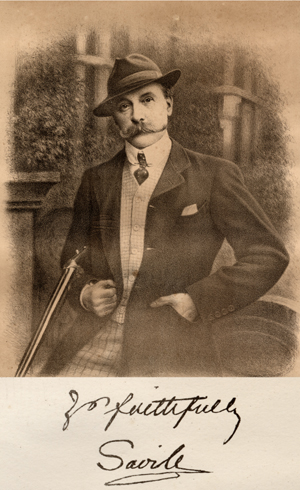
Baron Savile.
The gun was made with Westley Richards’ lovely scalloped receiver, which my pal Ian Jackson, who worked at WR for 14 years, says separates the “whittlers from the stockers.” It and its mate had two triggers when made, but it now sports Westley Richards’ patented single-selective trigger. I appreciate it very much because the trigger guard of every two-triggered, straight-grip English gun I’ve owned whacked the middle finger of my shooting hand when the front trigger was pulled.
The 27 15/16-inch barrels have been sleeved and Nitro-proofed for 2½-inch 12-gauge cartridges. The straight, modestly figured English walnut stock has a length of pull of 14 5/8 inches to the center of the smoothly worn, red rubber Silvers pad; a drop at comb of 1½ inches; a drop at heel of 2½ inches; and a very slight cast-off for a right-handed shooter. It suits me just fine.
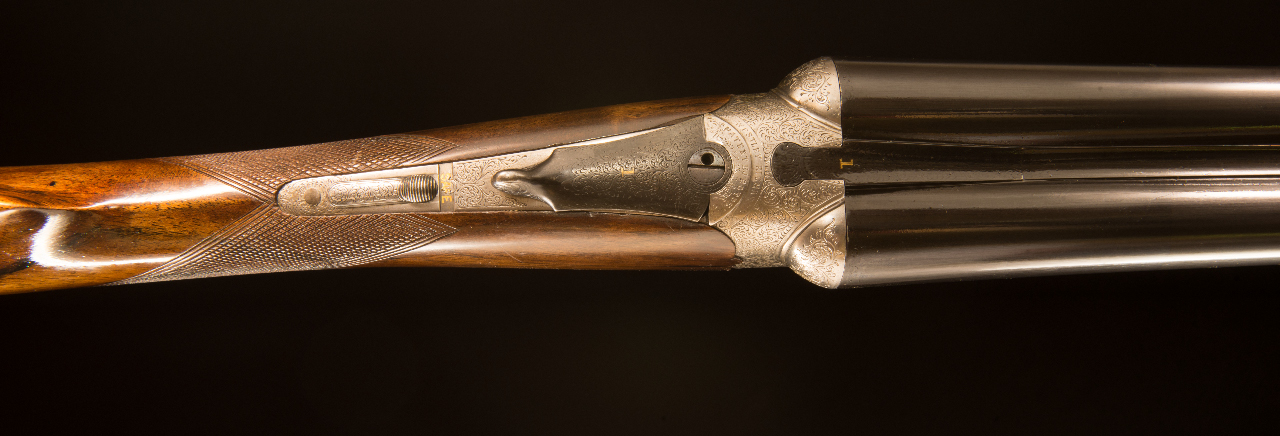
Westley Richards’ trademark “C” toplever. (Photo: Kirby Hoyt)
A perfectly fitted horn tip graces the well-checkered forend, which also has a gold “1” set into the exquisitely engraved latch. Matching gold “1s” grace the top rib and the broad, blued, engraved Westley Richards patent “C” style toplever.
Late 19th century tight scroll engraving covers the scroll-backed Anson and Deeley boxlock action and the ball-shaped fences. Westley Richards’ proud marque is enclosed by a banner on both sides of the action bars.
Alas, the engraving on the trigger guard has long since worn off, as has some of the coat of arms on the stock shield. (The period photograph of Baron Savile, above, shows him cradling a scroll-backed Westley Richards in such a way as to eventually wear the trigger guard engraving.)
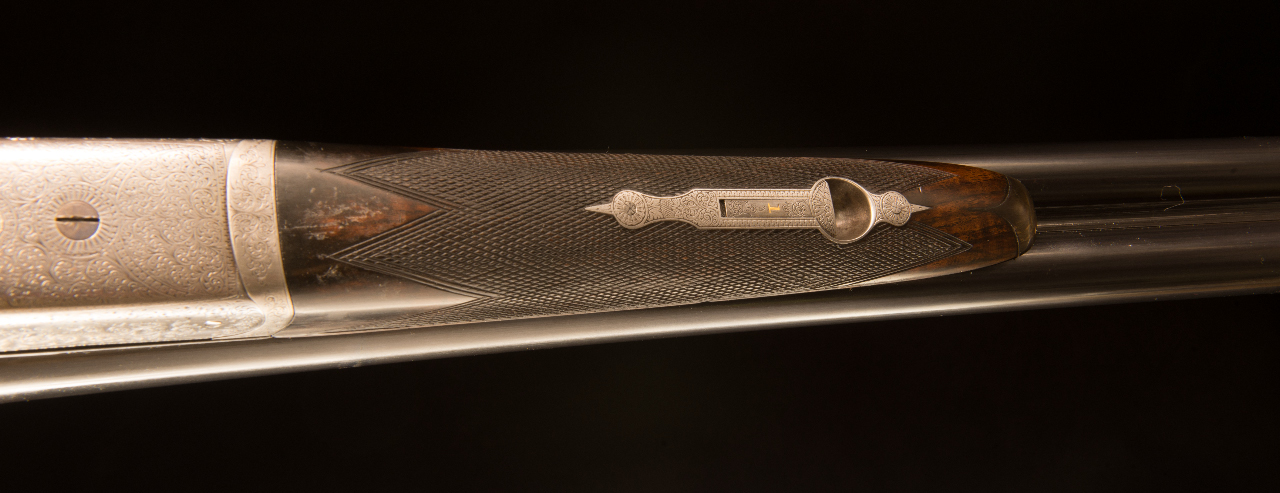
The gun features a well-checkered forend that perfectly accentuates its scrollwork. (Photo: Kirby Hoyt)
Choked improved cylinder on the right and improved modified on the left, it suits my upland bird hunting ideally. So far it has accounted for nothing but a few biodegradable White Flyer clay birds, but with an unloaded weight of 6 pounds, 9 ounces, it will be a pleasure to carry afield this coming fall.
Neither the gun dealer nor I were aware of the interesting provenance of 15639 when the purchase was made. It has been quite a surprise to learn about it through the kindness of Ricky Bond at WR and the general information about the Savile family from the Internet. I hope you have enjoyed seeing this “sleeper” and that you may be blessed to awaken one yourself.

FINE SHOTGUNS
By John M. Taylor
Firearms expert John Taylor offers a global view of shotguns using photographs and descriptions of guns from the U.S. and many European countries. Sections include how to care for and store your gun, available accessories, and travel cases. Buy Now

